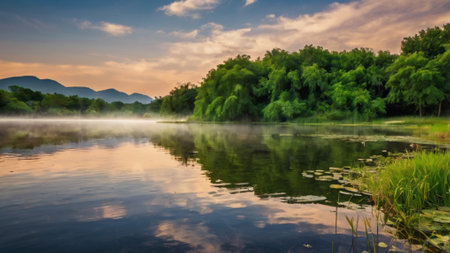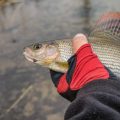1. Introduction: The Need for Sustainable Fishing Clothing in the UK
Eco-friendly and sustainable fishing clothing has become an essential consideration for conscious anglers throughout the United Kingdom. As British anglers increasingly recognise the impact of their choices on local ecosystems—from pristine Scottish lochs to the dynamic coastal waters of Cornwall—the demand for sustainable apparel is growing. The UK is home to a unique blend of weather patterns, often marked by rapid changes, high humidity, and persistent rain, which makes functional, durable gear crucial for any successful angling trip.
Traditional fishing clothing often relies on synthetic materials and chemical treatments that contribute to microplastic pollution and environmental degradation. In contrast, eco-friendly alternatives not only reduce this footprint but also support responsible manufacturing practices. This shift is particularly important in Britain, where sensitive riverbanks and marine habitats are under increasing pressure from human activity.
Why Sustainability Matters for UK Anglers
| Environmental Factor | Impact of Unsustainable Clothing | Benefit of Sustainable Options |
|---|---|---|
| UKs Aquatic Ecosystems | Microfibres pollute rivers and seas, harming fish and wildlife | Biodegradable or recycled fabrics reduce waterborne pollution |
| Frequent Rain & Damp Conditions | Synthetic waterproofing can leach harmful chemicals into the environment | PFC-free waterproofing protects both the angler and nature |
| Biodiversity Hotspots | Non-sustainable production disrupts delicate habitats | Ethically sourced materials help preserve local flora and fauna |
The move towards sustainable fishing clothing is not merely a trend but a necessary response to the environmental challenges facing British waterways. By choosing eco-friendly options, UK anglers can enjoy their pastime while helping to protect the landscapes and waters that make British angling so special.
Key Features of Eco-Friendly Angling Apparel
For UK anglers committed to sustainability, choosing eco-friendly fishing clothing means prioritising both environmental impact and performance. The unique climate and fishing conditions across the British Isles call for apparel that stands up to wind, rain, and fluctuating temperatures, while also reflecting a conscious approach to sourcing and manufacturing.
Materials: Responsibly Sourced and Recycled Fibres
The foundation of sustainable angling clothing lies in its materials. Leading brands now use recycled polyester from post-consumer plastics, organic cotton free from harmful pesticides, and even regenerated nylon made from discarded fishing nets. These fibres not only reduce landfill waste but also lessen reliance on virgin resources, making them ideal for eco-conscious UK anglers.
Durability: Built for the British Weather
The unpredictable UK weather demands robust outdoor wear. Sustainable fishing clothing is designed with longevity in mind—reinforced stitching, abrasion-resistant panels, and fade-proof dyes ensure garments withstand years of riverbank or coastal use. This durability reduces the frequency of replacements, further minimising environmental impact.
Water Resistance: Essential for UK Conditions
From Scottish lochs to Cornish estuaries, waterproofing is non-negotiable. Many eco-friendly garments now employ advanced water-repellent finishes free from toxic PFCs (perfluorinated chemicals), offering excellent protection without compromising aquatic ecosystems. Look for breathable membranes that keep you dry while allowing moisture to escape—a must for comfort on those damp British mornings.
Ethical Manufacturing: Supporting Fair Labour Practices
Sustainability extends beyond materials to how garments are produced. Ethical fishing apparel brands are transparent about their supply chains, ensuring fair wages and safe working conditions. Certifications like Fair Wear Foundation or B Corp status signal genuine commitment—values increasingly important to UK consumers who care about people as much as planet.
Comparison Table: Key Features at a Glance
| Feature | Sustainable Option | Traditional Option |
|---|---|---|
| Material | Recycled polyester, organic cotton, regenerated nylon | Virgin polyester, conventional cotton |
| Durability | Reinforced seams, abrasion resistance | Standard construction |
| Water Resistance | PFC-free DWR finishes | PFC-based waterproofing |
| Manufacturing Ethics | Certified fair labour practices | Lack of transparency |
Selecting eco-friendly fishing clothing tailored to UK conditions ensures anglers enjoy comfort, protection, and peace of mind—all while treading lightly on the environment and supporting ethical production standards.

3. Popular Sustainable Brands and British Innovations
As eco-conscious angling gains traction across the UK, a wave of sustainable fishing clothing brands has emerged, setting new standards for ethical craftsmanship and environmental responsibility. Below, we spotlight some leading names and pioneering local initiatives that are transforming the industry while championing green innovation.
Leading Eco-Friendly Fishing Clothing Brands in the UK
| Brand | Key Features | Eco Credentials | UK-Based? |
|---|---|---|---|
| Finisterre | Hardwearing jackets, base layers, merino wool garments | Recycled fabrics, B Corp certified, plastic-free packaging | Yes (Cornwall) |
| Rapanui | T-shirts, hoodies, organic cotton fishing tops | Made-to-order production, renewable energy factory, circular supply chain | Yes (Isle of Wight) |
| Patagonia | Technical waders, waterproof outerwear, sun protection shirts | Fair Trade Certified™, recycled polyester/nylon, transparency in supply chain | No (Strong UK presence) |
| Vass Rainwear | Fishing waders, jackets and bibs designed for British weather | PVC alternatives, focus on durability to reduce waste | Yes (Essex) |
| Sundried | Sportswear including fishing-appropriate base layers and tops | Recycled materials from ocean plastics, ethical production standards | Yes (London) |
Pioneering Local Initiatives: Innovation on Home Soil
The UK’s commitment to sustainability extends beyond established brands. Grassroots projects and regional collectives are also making waves by supporting local artisans and small-batch producers who use traditional techniques alongside innovative green technologies. Schemes like The Green Angler Project, for example, encourage anglers to trade in old gear for discounts on sustainable apparel, reducing landfill waste and promoting circular consumption. Meanwhile, Scottish companies are exploring biodegradable materials derived from seaweed or hemp fibres—resources that thrive in Britain’s coastal environments.
The Importance of British-Made Craftsmanship
Bespoke tailoring and locally sourced fabrics not only shrink carbon footprints but also support skilled employment within rural communities. By choosing UK-made fishing clothing from these forward-thinking brands and initiatives, conscious anglers help foster a greener future for British waters and the generations yet to cast a line.
Environmental Impact: Benefits for British Waterways
When UK anglers opt for eco-friendly and sustainable fishing clothing, the positive effects ripple far beyond personal choice, directly benefiting our cherished rivers, lakes, and coastal ecosystems. Traditional fishing attire often relies on synthetic fibres and chemical treatments that can leach microplastics and toxins into waterways during washing or through wear and tear outdoors. In contrast, sustainable garments utilise organic materials, natural dyes, and responsible production processes that dramatically reduce such pollution.
Reducing Pollution in Local Ecosystems
Sustainable fishing clothing made from organic cotton, recycled polyester, or innovative biodegradable fabrics helps minimise the introduction of harmful substances into the environment. These choices lower the risk of contaminating aquatic habitats with plastics and chemicals that can threaten fish, invertebrates, birds, and plant life native to British waters.
Comparative Environmental Impacts
| Clothing Type | Microplastic Release | Chemical Runoff | Wildlife Risk |
|---|---|---|---|
| Conventional Synthetic | High | Moderate-High | Significant |
| Sustainable/Organic | Low-Negligible | Minimal | Low |
Supporting British Wildlife Preservation
The knock-on effect of reduced pollution is a healthier ecosystem for local species. Otters, kingfishers, trout, and countless other iconic British creatures depend on clean water to thrive. By wearing sustainable fishing apparel, conscious anglers play a direct role in preserving these habitats, supporting biodiversity and the intricate balance of life along our waterways.
Empowering Anglers as Environmental Stewards
Beyond immediate benefits, choosing eco-friendly gear fosters a culture of environmental responsibility within the UK angling community. It sends a powerful message about valuing our natural heritage and sets an example for others to follow—helping ensure that future generations can enjoy vibrant, unspoilt fishing spots across Britain.
5. A Practical Guide for Ethical UK Anglers
For British anglers committed to eco-friendly and sustainable practices, making informed decisions about fishing attire is crucial. This guide provides actionable tips on selecting, maintaining, and responsibly disposing of fishing gear, all with a focus on the unique needs of the UK angling community.
Selecting Sustainable Fishing Clothing
When choosing your next set of fishing clothes, look for garments made from recycled or organic materials, such as recycled polyester or certified organic cotton. Brands that use water-based dyes and avoid harmful chemicals are preferable. Always check for certifications like the Global Organic Textile Standard (GOTS) or Bluesign®, which ensure environmental responsibility throughout production.
Key Considerations for UK Anglers
| Feature | Why It Matters | UK-Specific Tip |
|---|---|---|
| Water Resistance | Keeps you dry during unpredictable weather | Opt for PFC-free waterproofing to protect British waterways |
| Thermal Insulation | Ensures comfort during chilly mornings on British rivers and lakes | Choose sustainably sourced wool or recycled insulation |
| UV Protection | Prevents sunburn during summer sessions | Select UPF-rated clothing without chemical finishes |
Maintaining Your Eco-Friendly Gear
Caring for sustainable clothing prolongs its lifespan and reduces its environmental impact. Wash garments only when necessary, ideally with cold water and eco-friendly detergents. Air dry instead of using a tumble dryer to conserve energy. For technical fabrics, follow manufacturer guidelines to maintain water repellency without resorting to harsh chemicals.
Repair Before Replacing
The UK has a growing network of local repair cafés and outdoor shops offering mending services. Utilise these resources to fix minor tears or replace zips—supporting both sustainability and local businesses.
Responsible Disposal in the UK Context
If your clothing is beyond repair, consider textile recycling schemes available through councils or national retailers. Many UK charities accept old but usable outdoor gear for redistribution. Avoid sending items to landfill whenever possible.
Summary Table: Responsible Fishing Clothing Practices
| Action | Sustainable Option in the UK |
|---|---|
| Selecting Gear | Certified eco-friendly brands, local suppliers |
| Maintenance | Cold washes, air drying, professional repairs |
| Disposal | Council textile recycling, charity donations |
By following these practical steps, UK anglers can enjoy their sport while actively protecting the nation’s rich aquatic environments for future generations.
6. The Future of Sustainable Angling in the UK
The landscape of sustainable angling in the UK is evolving rapidly, with eco-friendly fishing clothing at the heart of this transformation. As British anglers become increasingly aware of their environmental impact, the demand for innovative, responsible gear continues to surge. Current trends reflect a growing preference for materials such as recycled polyester, organic cotton, and biodegradable fibres, all engineered to deliver performance without compromising the planet.
Emerging Technologies and Materials
Major UK brands are investing in advanced textile technologies that reduce water consumption, eliminate harmful dyes, and use post-consumer waste as raw material. For example, some manufacturers now offer jackets made from discarded fishing nets or sea plastics retrieved from British coastlines. These innovations not only help clean up local environments but also set a benchmark for circular economy practices within the angling community.
Key Trends in Sustainable Fishing Apparel
| Trend | Description | UK Example |
|---|---|---|
| Recycled Materials | Use of post-consumer plastics and recycled fabrics | Jackets made from ocean plastic by local brands |
| Biodegradable Components | Zippers, buttons, and trims designed to break down naturally | Eco-friendly fastenings in homegrown apparel lines |
| Ethical Manufacturing | Fair wages, reduced emissions, and transparent supply chains | Brands adhering to UK ethical standards and certifications |
The Shift Towards Eco-Conscious Angling
The shift towards eco-conscious angling is also driven by grassroots campaigns and angling associations across Britain. Educational initiatives encourage anglers to choose sustainably produced clothing and practice responsible fishing habits. This collective effort is fostering a new generation of environmentally literate fishers who prioritise conservation alongside their passion for the sport.
Looking Ahead: What’s Next?
The future promises even greater strides in sustainable apparel design, including self-cleaning fabrics that reduce laundering needs, further reducing water and energy usage. With continued collaboration between designers, anglers, and conservationists, the UK is poised to become a leader in sustainable angling fashion—proving that stylish performance wear can go hand-in-hand with a commitment to protecting our rivers, lakes, and coastal waters for generations to come.


